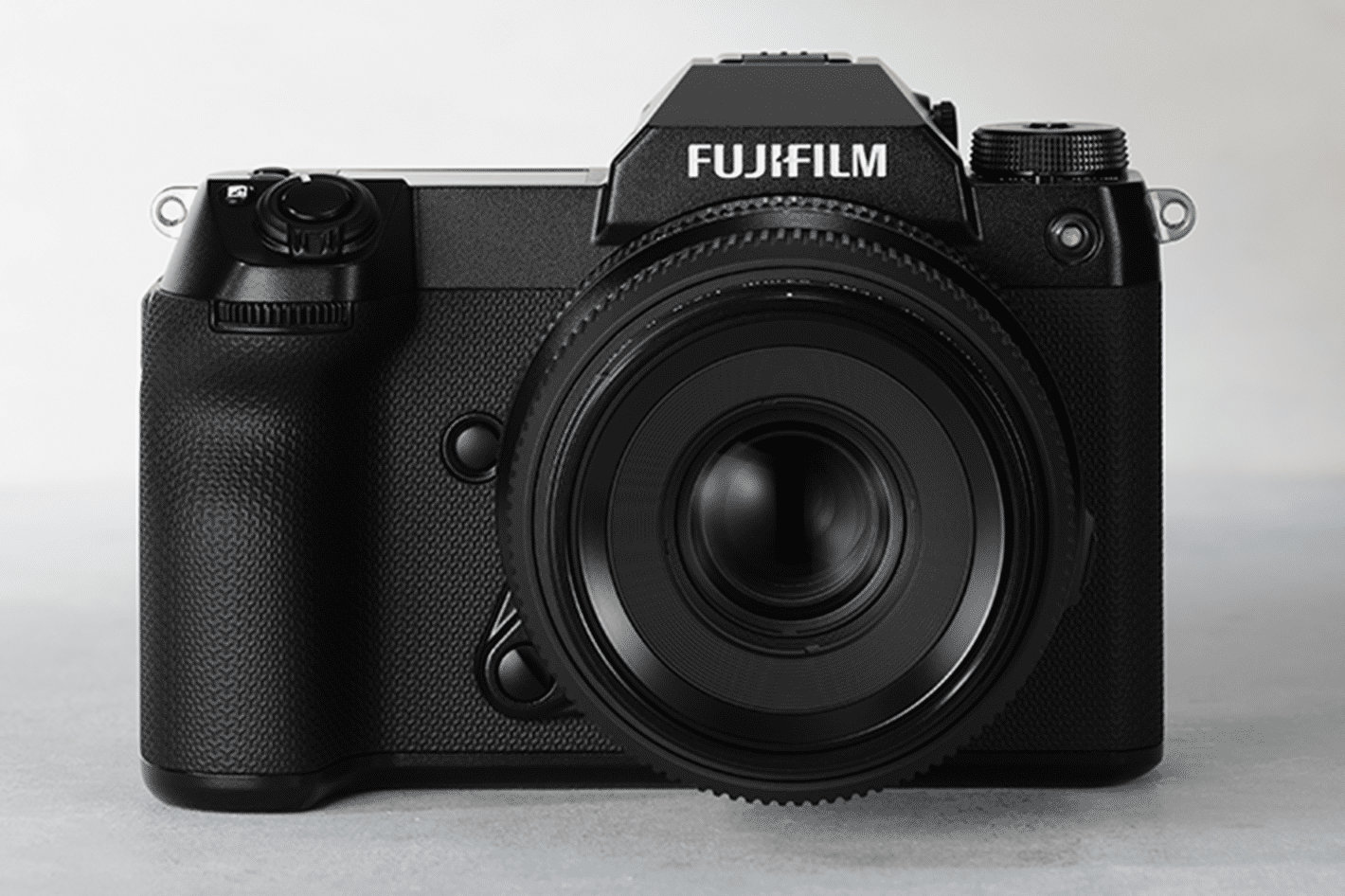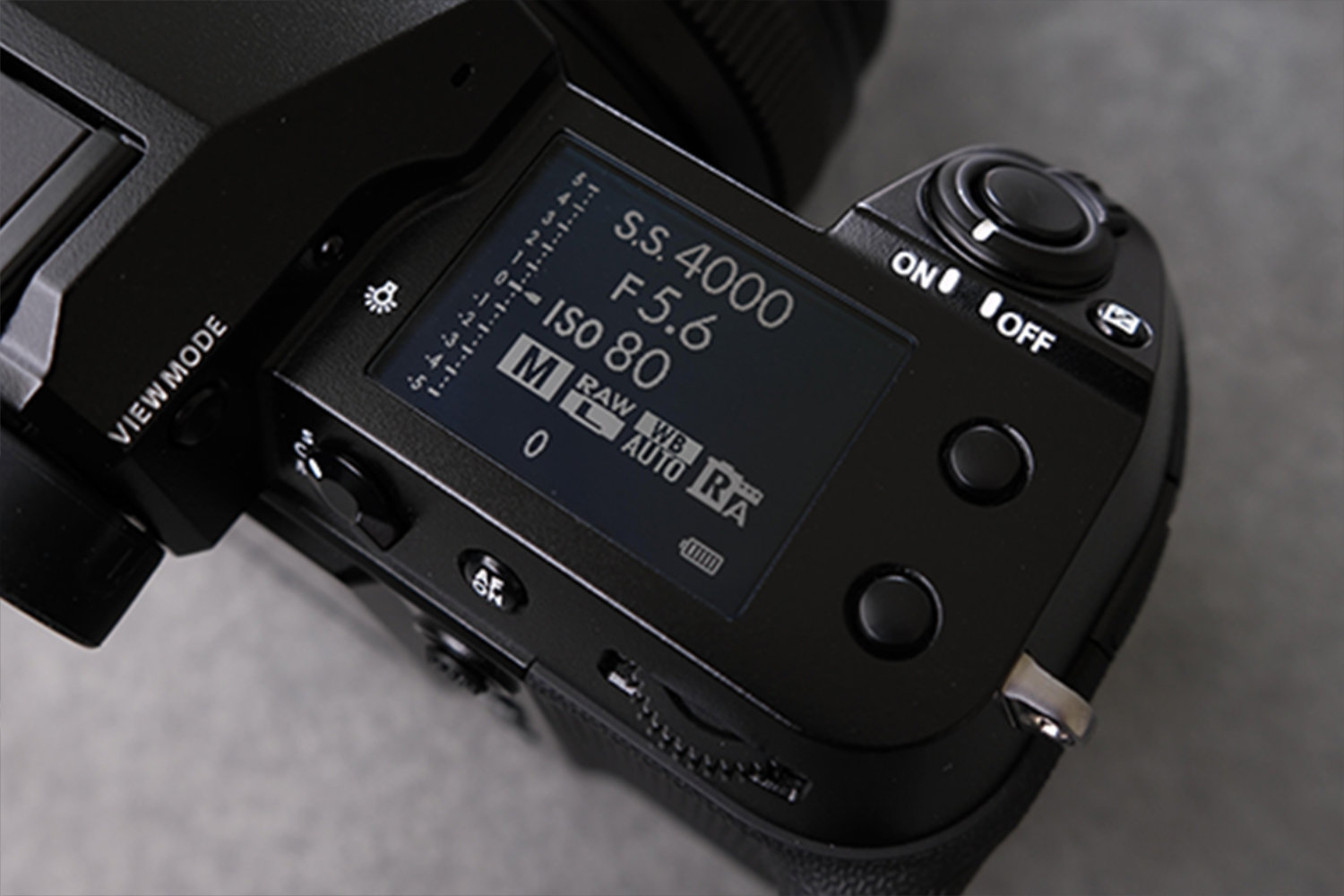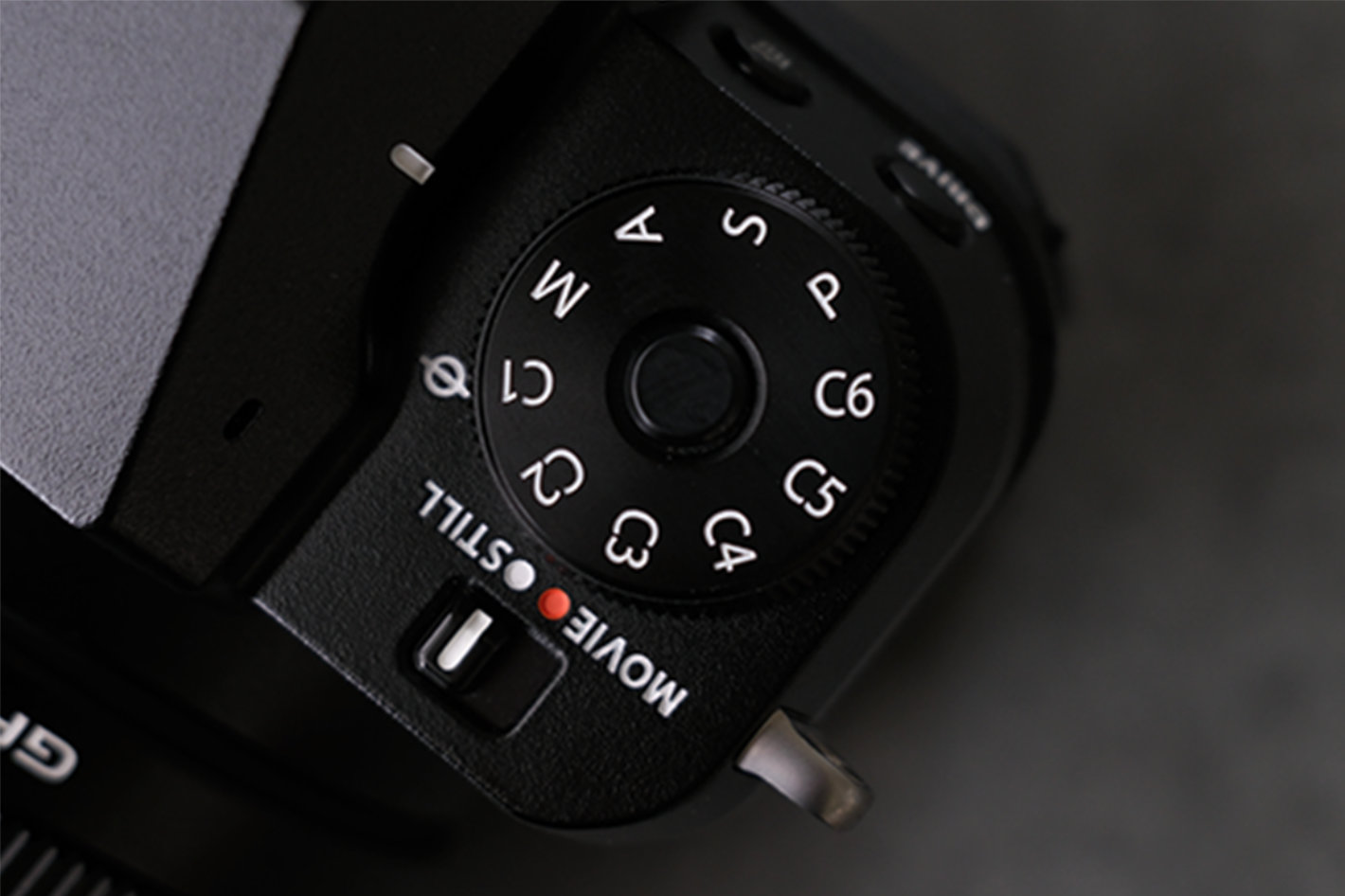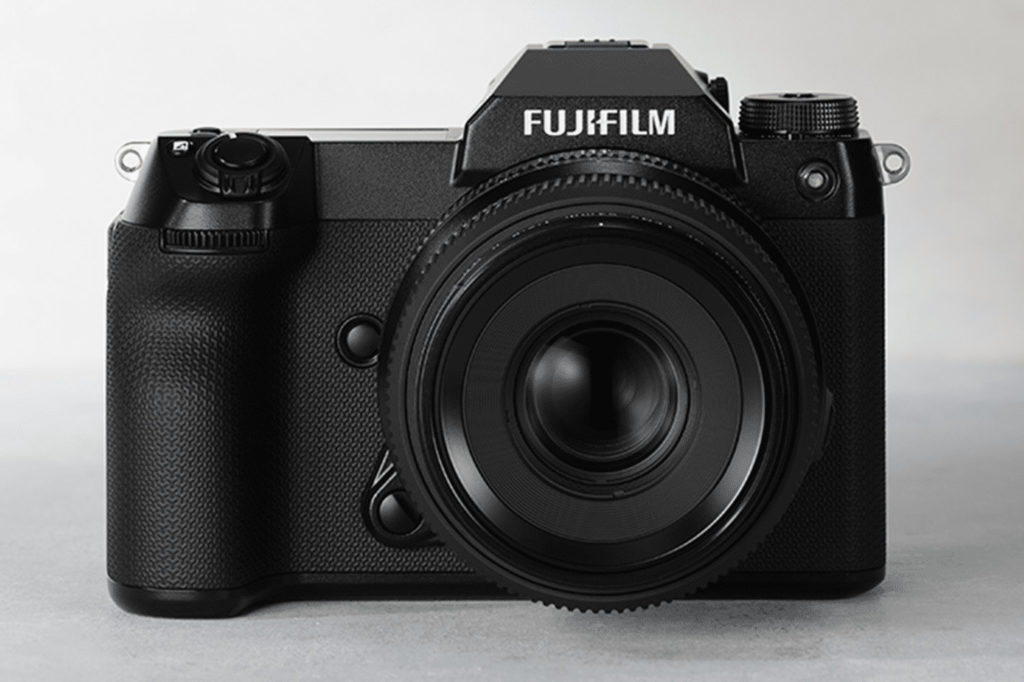 The new GFX100S II harnesses the image quality and key functionality from the larger GFX100 II mirrorless digital camera, in a smaller, lighter GFX System body that now offers ISO 100 in video mode.
The new GFX100S II harnesses the image quality and key functionality from the larger GFX100 II mirrorless digital camera, in a smaller, lighter GFX System body that now offers ISO 100 in video mode.
First things first: Fujifilm claims that with the new sensor in the GFX100S II, the standard ISO 100 is available in video mode to deliver even higher image quality in video footage than on previous GFX System models. In fact, thanks to the improved pixel structure on the newly developed GFX 102MP CMOS II sensor, ISO 100 is now standard sensitivity. But it does not end there, as the camera also offers wider dynamic range and lower noise compared to previous GFX System models. Autofocus and handling are also improved compared to the GFX100S. Just as with stills, movies will show stunning depth, tone, and detail, says Fujifilm.
The GFX100S II features F-Log2, which offers 13+ stops (according to Fujifilm testing) of dynamic range. This records richly toned footage and significantly optimizes post-production flexibility. Recording and output of different video formats are possible with the recording media and HDMI port. It is possible to record in F-Log2 internally while simultaneously previewing footage on an external monitor, for example. Connecting an external SSD to GFX100S II via the USB-C port allows photos and videos to be recorded directly to the drive, plus it enables videos to be recorded in Apple ProRes.
Waveform and Vectorscope are useful features on the camera body itself that confirm exposure and color tones without needing to look at an external monitor. Additionally, selecting the Parade option shows the RGB parade. GFX100S II supports Frame.io Camera to Cloud without any additional accessories. This allows you to directly upload stills and video files to Frame.io, significantly streamlining the workflow from creation to edit.
 Large format sensor
Large format sensor
Now that we’ve highlighted the video functions it’s time to look at what the new model offers. The GFX100S II is equipped with a new, high-performance GFX 102MP CMOS II large format sensor approximately 1.7 times larger than a 35mm full-frame sensor, and paired with Fujifilm’s latest high-speed image processing engine, X-Processor 5, all housed within a compact body and weighing approximately 883 grams (31 ounces), making it the lightest digital camera in the GFX System.
Fujifilm notes that “GFX100S II offers rich tonal expression and three-dimensional rendering capabilities, made possible by the unique characteristics of the large format sensor, with AI-based subject detection. It features fast and highly precise autofocus (AF) and continuous shooting speed of up to 7.0 frames per second3. The in-body image stabilization (IBIS) function achieves a maximum of eight-stop five-axis performance, the best in the GFX System. In terms of video performance, users can create vibrant and smooth 4K/30P videos, allowing for high-quality video production as well.”
“Our GFX System continues to revolutionize ultra-high-resolution, large format image making by taking it out of specialist studio environments and putting into the hands of passionate creatives across all genres, styles and applications,” said Victor Ha, vice president, Electronic Imaging Division and Optical Devices Division, FUJIFILM North America Corporation. “GFX100S II is the natural next step in the evolution of the product line that specifically caters to the needs of photographers who have wanted additional autofocus performance and responsiveness from their GFX100S cameras. We feel we’ve really delivered in that regard and done so in a way that allows it to keep its compact form factor, which means it can make an appearance in almost any creative setting.”
 Here is more information about the main features of the camera, shared by Fujifilm:
Here is more information about the main features of the camera, shared by Fujifilm:
Large format sensor with 102MP
Improvement to the pixel structure in GFX100S II’s newly developed 102MP large format sensor has boosted the new sensor’s saturated electrons, enabling the use of ISO 80 as a standard sensitivity. At this setting and when shooting in 16-bit RAW, the camera can create images at greater dynamic range and with lower noise than with the previous GFX model.
The new sensor’s micro lenses provide light use efficiency at the sensor’s edges. GFX100S II is equipped with a total of 20 Film Simulation modes, including REALA ACE mode, which combines faithful color reproduction and well-defined tonal expression.
GFX100S II also includes the “Pixel Shift Multi-Shot” feature, which controls the in-body image stabilization function to shift the image sensor while creating photos. By creating a 16-shot RAW file, shifting the image sensor by 0.5 pixels for each shot, and using the dedicated software, “Pixel Shift Combiner”, to combine the 16 RAW files, it is possible to generate an image with approximately 400 million pixels. Additionally, the “Real Color” mode, which captures 4 RAW files with a one-pixel shift for each image, can generate images with a resolution of 102 million pixels while suppressing false colors, in only one-fourth of the imaging time and data volume compared to the previous GFX model.
Powerful IBIS mechanism in a compact body
The IBIS unit combined with gyro and acceleration sensors are designed to accurately depict even the slightest movement, along with the use of image information to detect shake and improve correction precision when creating an image. The camera’s IBIS mechanism also includes up to 8-stops of 5-axis stabilization performance, allowing creators who are working handheld to reliably, confidently, and comfortably create images even in low-light scenes without a tripod.
The camera has a height of approximately 104mm (4 inches) and a depth of approximately 87mm (3.4 inches), similar to previous GFX System models.
The body of GFX100S II incorporates Fujifilm’s BISHAMON-TEX textured exterior, designed to provide comfort and grip when holding the camera.
Evolved high-speed, high precision autofocus (AF) and continuous shooting performance
In addition to the evolved face and eye AF achieved through algorithm advancements, GFX100S II is equipped with AI based subject detection AF, developed with deep learning technology. It can detect animals, birds, cars, motorcycles, bicycles, airplanes, trains, insects, and drones5, and it features an improved AF predictive algorithm compared to previous GFX System models, enabling it to handle high-speed motion tracking situations effectively.
With the new development of the 102 MP high-speed sensor and an exceptionally high readout speed along with a newly developed shutter drive, it achieves a continuous shooting performance of 7.0 frames per second.
GFX100S II is equipped with a high-magnification, high-resolution electronic viewfinder (EVF) with a magnification of 0.84x and 5.76 million dots that is designed to suppress image distortion and flow caused by shifts in the position of the eye.
4K/30P video recording capability
With the new sensor in GFX100S II, the standard ISO100 is available in video mode to deliver even higher image quality in video footage than on previous GFX System models.
GFX100S II is equipped with a tracking AF function during video recording. When using AF-C + Wide/Tracking AF, the user can easily track the intended subject, even in situations where multiple subjects are present.
The camera offers 4K video recording at 30 frames per second and is capable of recording in 4K/30P 4:2:2 10-bit on a compatible SD Memory Card (sold separately). GFX100S II is offers compatible recording using Apple ProRes™ by connecting an external SSD via a USB Type C cable6.
GFX100S II is equipped with “F-Log2,” which offers a wide dynamic range of 13+ stops for recording, allowing for increased optimal flexibility in post-production, and it has the capability to record and output different video formats using different recording media and HDMI output. For example, users can record using “F-log2” onto any compatible recording media, while also simultaneously monitoring video via HDMI with any Film Simulation mode applied. This makes it easy to apply creative looks on set, but still retain flexibility for almost any post-production color workflow.
GFX100S II offers an accessory-free, native Camera to Cloud integration for Adobe’s Frame.io, which allows users to wirelessly connect any GFX100S III to an active internet connection, authenticate it to Frame.io, and automatically upload photos and videos just moments after they are created. This can drastically reduce the amount of time needed to reach the end of any post-production workflow. GFX100S II is the latest GFX System camera to integrate Frame.io’s Camera to Cloud technology, joining GFX100 II in offering the capability.
Optional accessories
Hand grip (MHG-GFX S)
This metal hand grip is designed to enhance grip and stability when image making with larger telephoto lenses and offers optimal convenience when using a tripod.
Pricing and Availability
FUJIFILM GFX100S II is expected to be available in June 2024 at a Manufacturer’s Suggested Retail Price of $4,995.95 USD ($6,749.99 CAD). The MHG-GFX S hand grip is available at a Manufacturer’s Suggested Retail Price of $149.99 USD ($195 CAD).















